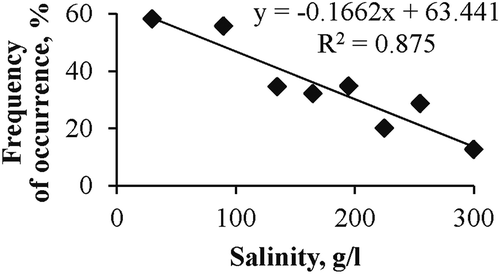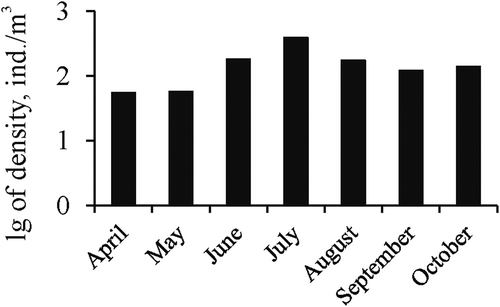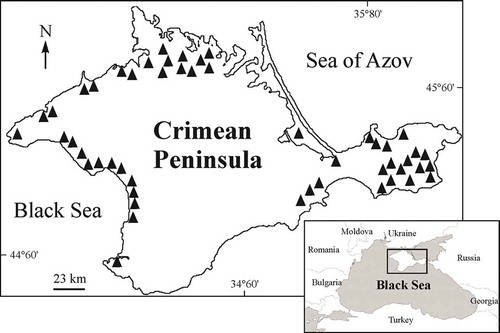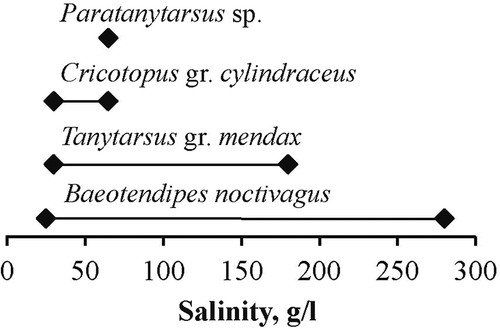Figures & data
Table I. Characteristics of Crimean hypersaline water bodies, where Chironomidae larvae were identified.
Figure 2. Dependence of frequency of Chironomidae larvae occurrence on salinity in Crimean hypersaline waters.

Table II. Abundance, biomass and production of chironomid larvae in Crimean hypersaline waters.
Figure 4. Dependence of log concentration of Chironomidae larvae on (a) salinity and (b) temperature in plankton of Crimean hypersaline waters.

Figure 5. The average monthly abundance of Chironomidae larvae in plankton of Crimean hypersaline waters.

Table III. Coefficients of power dependence (Equation 3) “mass (mg) – length (mm)” of Baeotendipes noctivagus larvae in different Crimean hypersaline habitats.
Figure 6. Dependence of (a) biomass and (b) production of Chironomidae larvae on salinity in plankton of Crimean saline waters.

Table IV. Chironomid species in hypersaline waters worldwide.


